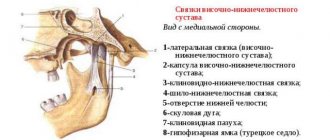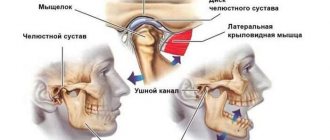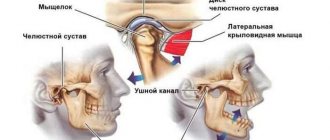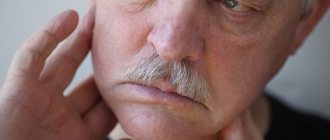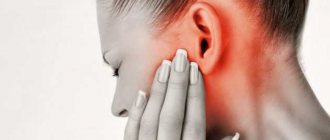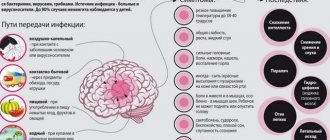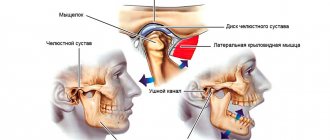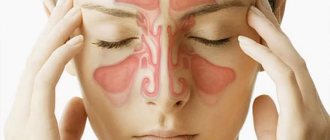Structure of the TMJ
The temporomandibular joint (TMJ) is a paired joint projected in the area of the front of the ears, located at the place where the skull and lower jaw connect.
The anatomical structural elements of the joint are: the articular head; glenoid cavity; intra-articular disc dividing the joint cavity into the upper and lower floors, the articular capsule and the ligamentous apparatus.
TMJ pathologies include:
- muscular-articular dysfunction of the TMJ, as a result of internal disorders or joint disorders of the ligamentous-muscular apparatus
- arthrosis
- arthritis
- synovitis
- chondromatosis
- ankylosis
Musculo-articular dysfunction of the TMJ
Muscular-articular dysfunction of the TMJ can cause disturbances in the functioning of such muscle groups as mastication, facial expression, and cervical muscles; or cause intra-articular disturbances in the movement and position of the disc and (or) ligamentous apparatus.
Arthrosis
Degenerative changes in the TMJ are most often described by radiation diagnosticians and manifest themselves in the form of narrowing of the joint space on CT or MRI studies, which is a symptom of other TMJ diseases.
Arthritis
Inflammatory disease of the TMJ, the causes of which can be specific (tuberculosis, syphilis) or nonspecific infectious agents; and autoimmune and connective tissue diseases.
Ankylosis
Acquired or congenital disorder of TMJ mobility. It may be a consequence of hematogenous osteomyelitis as a result of umbilical sepsis, rheumatoid disease, trauma and is characterized by heterotopic bone formation and fusion of articular surfaces.
Material and methods
To study the morphological changes in the tissues of the TMJ, we analyzed the medical histories of 20 children with various pathologies of the antenatal period of development and diseases of early age, and also examined sectional material.
Morphological studies were carried out on the basis of the pathological department of the Regional Children's Clinical Hospital (head: E.S. Patlusova, candidate of medical sciences) in Perm. After opening, the organs were fixed in a 10% formalin solution for 24 hours, then they were processed using a Leica TP 1020 histoprocessor for 18 hours in alcohols of increasing strength and embedded in paraffin in a Histostar embedding station. Sections with a thickness of 3 microns were made from the finished paraffin blocks using a Microtom Hm 325 semi-automatic microtome with a given section thickness. Staining was carried out with hematoxylin and eosin for a review technique and according to Van Gieson to assess the degree of scleroplastic changes.
As an additional method, a morphometric study of organs was used. In this section, the thickness of the epithelial layer, the severity of perivascular edema, the thickness of the vascular walls and the width of the vascular lumens were assessed in order to assess the degree of emerging vascular disorders that could cause secondary changes in the organs of the oral cavity over time.
Morphometric study of the preparations was carried out using a binocular light microscope Axioskop 40 (´4, ×10, ×40) with a ×10 eyepiece and a computer image analysis system. It included: a light microscope, an Infinity 1 color video camera, an IBM compatible computer and software. The images (using the Infinity Analyze program) were digitized and transferred for subsequent storage to a computer hard drive. Computer image analysis was carried out using the Infinity Analyze program.
Treatment
Treatment for TMJ can range from conservative dental and medical treatments to complex surgical procedures. Depending on the diagnosis, treatment may include a short course of anti-inflammatory, painkillers and drugs aimed at muscle relaxation, special mouthguards/plates/splint therapy, consultation with medical specialists on psychological problems and stress.
If non-surgical treatment is unsuccessful or if there is obvious joint damage, surgery may be recommended. Surgery may involve arthroscopy and arthrolavage (a technique identical to orthopedic procedures used to examine and treat large joints such as the knee) or removing damaged tissue and replacing it with implants.
After diagnosing and making the correct diagnosis for problems with the temporomandibular joint, our specialists will provide the appropriate treatment necessary for a particular case.
Temporomandibular joint dysfunction (TMJ)
Causes of joint dysfunction.
The temporomandibular joint (TMJ) is a complex apparatus
consisting of muscles, ligaments, cartilaginous discs, bones. This system provides a movable articulation of the temporal bone of the skull with the lower jaw, facilitating its movement in three planes, back and forth, up and down, left and right. At the same time, the temporomandibular joint is considered one of the most active structures of the human body; it is involved in such important processes as chewing food, swallowing, breathing, yawning, and speech. Any problem that results in a disruption in the normal functioning of a joint is called TMJ dysfunction. According to statistics, such violations are by no means rare. According to various sources, they occur in 30-70% of cases of dental diseases. The dysfunction of the TMJ is based on a multifactorial process. It is believed that the development of symptoms is caused by pathology of the joint itself or damage to the masticatory muscles.
More specifically, the development of negative signs may be due to:
- Anatomical features, discrepancy between individual elements of the articulation, the articular fossa and the head of the articular bone and others
anomalies of the dental system. - Trauma to the joint, facial bones and jaw, their improper fusion after a fracture.
- Malocclusion due to tooth loss, increased wear
, or other factors. - Bruxism, involuntary jaw clenching and teeth grinding;
- overstrain of the jaw muscles due to their overload (professional activity of lecturers, teachers, habit of biting nails, incorrect position of the telephone, long-term, more than three hours, dentist appointment without rest breaks).
- Stress and mental disorders that also affect joint movements.
- degenerative-dystrophic disorders (arthrosis).
- Inflammatory process in the joint (arthritis).
- Endocrine disorders, infectious diseases.
IMPORTANT:
A fairly common cause of TMJ dysfunction is professional errors by dentists. The violation can be caused by incorrect placement of a filling on a chewing tooth or incorrectly performed prosthetics.
Characteristic symptoms.
Diagnosis and treatment of TMJ dysfunctions is difficult, since this type of disorder is characterized by many different manifestations.
At the same time, TMJ dysfunction must be differentiated from a number of other diseases. It can be difficult for patients to understand that the root of the problem is a malfunction of the joint. Specialists at the Dentist clinic often encounter the fact that before getting an appointment with a gnathologist, people underwent long-term and ineffective treatment from neurologists, therapists, and ENT doctors. The following symptoms are considered typical for temporomandibular joint dysfunction:
- Clicking and noise effects in the joint. Joint clicking and other sounds
occurring when moving a joint, chewing, or yawning are so loud that others can hear them. They may be accompanied by pain that is limited to the joint or radiates to the face and neck. - Headache concentrated in the temples, back of the head, radiating to the forehead, neck, shoulder. Such sensations can be so intense that the patient undergoes examinations to rule out dangerous brain diseases.
- Bite problems, manifested by a violation of jaw closure.
- Facial asymmetry.
- Change in the amplitude of mouth opening.
- Jaw jamming.
- Soreness and tension in the jaw muscles.
- Toothache in the absence of manifestations of caries and other dental damage.
- Signs of damage to the ear area, manifested by pain and ear congestion, hearing loss, ringing and noise in the ears, which is associated with the anatomical proximity of both structures.
Less typical complaints should also be treated with the utmost care:
dry mouth;
burning sensation in the nose, throat, tongue; photophobia; insomnia; snore; apnea (holding your breath during sleep). IMPORTANT:
Because TMJ dysfunction is difficult to diagnose and many dentists are not adequately trained to care for these patients, people may not always be able to get the help they need. To avoid this, if questionable symptoms appear, contact the dentists of the Dentist clinic.
Which doctor treats TMJ dysfunction.
Treatment of TMJ dysfunction is the responsibility of a gnathologist dentist
. Exactly
This specialist, through his actions, helps set the patient’s lower jaw in the correct position, ensuring balanced operation of the entire system.
After conducting a diagnosis, the doctor will determine the causes of failures and suggest the most optimal ways to solve existing problems. Having outlined the correction methods, he will monitor the progress of treatment.
Despite the importance of this dental specialty, not every center is ready to provide a consultation with a gnathologist in Moscow. The issue of conducting diagnostic studies is not always fully resolved. In search of the most suitable center, pay attention to the Dentist clinic. Our center offers a full range of services in this area.
Diagnosis of the disease.
Diagnosis of TMJ dysfunction
is multi-stage and includes a whole
range of procedures
:
- The patient's complaints and anamnesis data are studied;
- The patient's posture, head position, facial symmetry, as well as functions such as breathing, swallowing, and chewing are assessed.
- A study of the closure of teeth in different positions of the lower jaw is carried out; the condition of the masticatory muscles, the tension of the muscles of the head, neck, and back are studied by palpation.
However, purely objective examination and functional tests are not enough. Additional studies are needed
for a complete clinical picture :
- X-ray diagnostics
(panoramic image, survey X-ray in different projections, cone-beam and magnetic resonance imaging); - Functional analysis, which involves taking impressions, making diagnostic models, and analyzing occlusal contacts. Electromyography is prescribed to determine the strength of muscle compression.
All techniques necessary for reliable diagnosis can be fully used by the specialists of the Dentist clinic.
In their work, doctors use modern expert-level equipment that provides the most accurate research results. Diagnosis and processing of the results of diagnostic studies takes about a week, after which the dentist-gnathologist prepares a conclusion regarding the nature of the disorders, ways to solve the problem, possible treatment options, and prognosis are discussed.
Treatment methods used.
The goal of treating TMJ dysfunction is to reduce pain, expand the functional activity of the joint, and therefore improve the patient’s quality of life.
and depending on the nature of the detected disorders, conservative, reconstructive and surgical tactics are distinguished. Typically, treating TMJ pain and dysfunction requires a comprehensive approach. It is carried out through the interaction of a number of techniques and the efforts of dentists of different specialties. However, not in all cases, sound phenomena require corrective procedures. Treatment will be required if clicking in the joint is combined with limited mobility and accompanied by pain. Main areas of treatment:
- Elimination of pain, restoration of the normal process of opening the mouth and movements of the lower jaw.
- Bringing the masticatory muscles to normal tone.
- Improvement of the bite, which is ensured by the formation of correct closure of the teeth, restoration of the number of teeth.
Conservative methods include:
- Myogymnastics, when with the help of special exercises it is achieved
improvement of muscle tone; - Psychotherapy, during which a specialist teaches the patient how to properly close the jaws;
- Drug therapy, including non-steroidal anti-inflammatory drugs, muscle relaxants, corticosteroids, botulinum toxin injections;
- Deprogramming of the masticatory muscles.
- Tire installation. This removable device made of polymer material is used to prevent the dentition from closing during sleep, as well as to relax the masticatory muscles and protect against tooth decay during bruxism.
- The use of devices aimed at limiting the mobility of the lower jaw. This is also facilitated by recommendations such as changing the diet in favor of softer foods and reducing speech load.
Reconstructive tactics
in the treatment of these disorders consist of restoring the height of the bite, the number of teeth, and the formation of correct closure of the dentition.
This task is achieved by installing dentures, inlays, using orthodontic techniques, as well as grinding the surface tissues of teeth that prevent the correct closure of the dentition. IMPORTANT:
Treatment for TMJ dysfunction in Moscow can be done at the Dentist clinic. If necessary, some of the activities will be entrusted to dentists of other specialties, orthopedist, orthodontist, periodontist, and surgeon.
Forecast and prevention.
If signs of TMJ dysfunction are detected, it is imperative to
consult a gnathologist and carry out the corrective procedures prescribed by him. If treatment is started in a timely manner, the prognosis is favorable and a lasting improvement in the situation will be achieved.
Ignoring treatment will invariably cause the condition to worsen. Over time, functional disorders will lead to the development of organic degenerative processes, accompanied by immobilization of the joint.
IMPORTANT:
Prevention of damage to the temporomandibular joint consists of taking care of the health of the oral cavity, preserving natural teeth, their timely treatment, and, if necessary, prosthetics.
Advantages of dentistry "Dentist".
In Moscow, a highly qualified consultation with a gnathologist dentist is available
get it at the dental clinic "Dentist". Using the services of our center, each patient can count on high-quality diagnostics using modern techniques, as well as a full range of treatment procedures.
Cost of services
gnathologist in Moscow is in a wide price range, but often does not correspond to the professional training of the specialist or the level of diagnosis. If you make an appointment with a gnathologist at the Dentist clinic, then during the free consultation you will be able to verify the professionalism of the doctor and the excellent diagnostic and treatment capabilities of our center. Since doctors use the most advanced technologies in their medical activities, this allows them to achieve success in the most complex cases of pathology.
